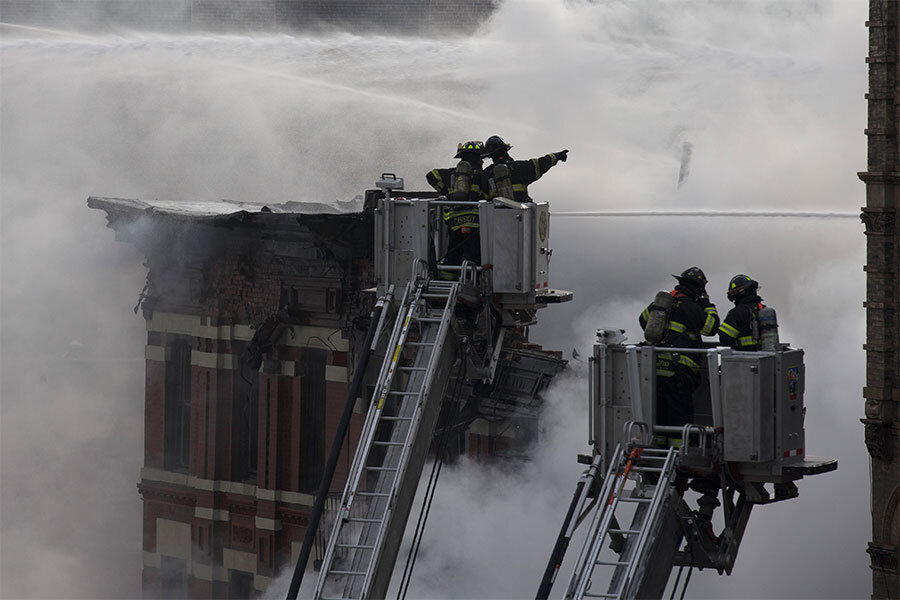Gas blast blamed for New York building fire
| New York
An apparent gas explosion leveled an apartment building, partially destroyed another, and launched rubble and shards of glass across streets in the heart of Manhattan's trendy East Village on Thursday, injuring at least a dozen people. Smoke could be seen and smelled for miles.
Restaurant diners ran out of their shoes and bystanders helped one another to escape the mid-afternoon blast, which damaged four buildings as flames shot scores of feet into the air, witnesses said. Passers-by were hit by debris and flying glass, and bloodied victims were aided as they sat on sidewalks and lay on the ground, they said.
"It was terrifying – absolutely terrifying," said Bruce Finley, a visitor from San Antonio, Texas, who had just taken a photo of his order at a restaurant known for its French fries when he felt the explosion next door. "It just happened out of the blue. ... We were shaking even an hour, hour and a half later."
Mayor Bill de Blasio said preliminary evidence suggested a gas explosion amid plumbing and gas work inside the building that collapsed was to blame. The building's gas service was being upgraded, and inspectors from utility Con Edison had been there to check on a planned gas meter installation about an hour before the fire, company President Craig Ivey said. But the inspectors decided the building wasn't ready for gas to be introduced, he said.
Orange flames billowed from the site, in an area of old tenement buildings home to students and longtime residents in an area near New York University and Washington Square Park.
About 250 firefighters converged to fight the flames. The fire department's commissioner said a second building was "in danger of possible collapse" and four buildings were affected in all.
Firefighters said at least 12 people were hurt, four critically, some with burns to their airways. Mayor de Blasio said it didn't appear that anyone was missing.
"We are praying that no other individuals are injured and that there are no fatalities," he said.
The fire happened a little over a year after a gas explosion in a building in East Harlem killed eight people and injured about 50. De Blasio noted that no one had reported a gas leak to authorities before Thursday's blast.
The area was evacuated, and the city's health department advised residents to keep their windows closed because of the smoke.
Adil Choudhury, who lives a block away, ran outside when he heard "a huge boom."
"Already there was smoke everywhere" when he saw the building, he said. "The flames were coming out from the roof. The fire was coming out of every window."
Items from a ground-floor sushi restaurant were blown into a street, and the explosion was so forceful that it blew the door off a cafe across the avenue. Debris littered sidewalks.
Con Ed crews planned to start investigating after firefighters got the blaze under control. The state Department of Public Service was monitoring Con Ed's response, Gov. Andrew Cuomo said.








